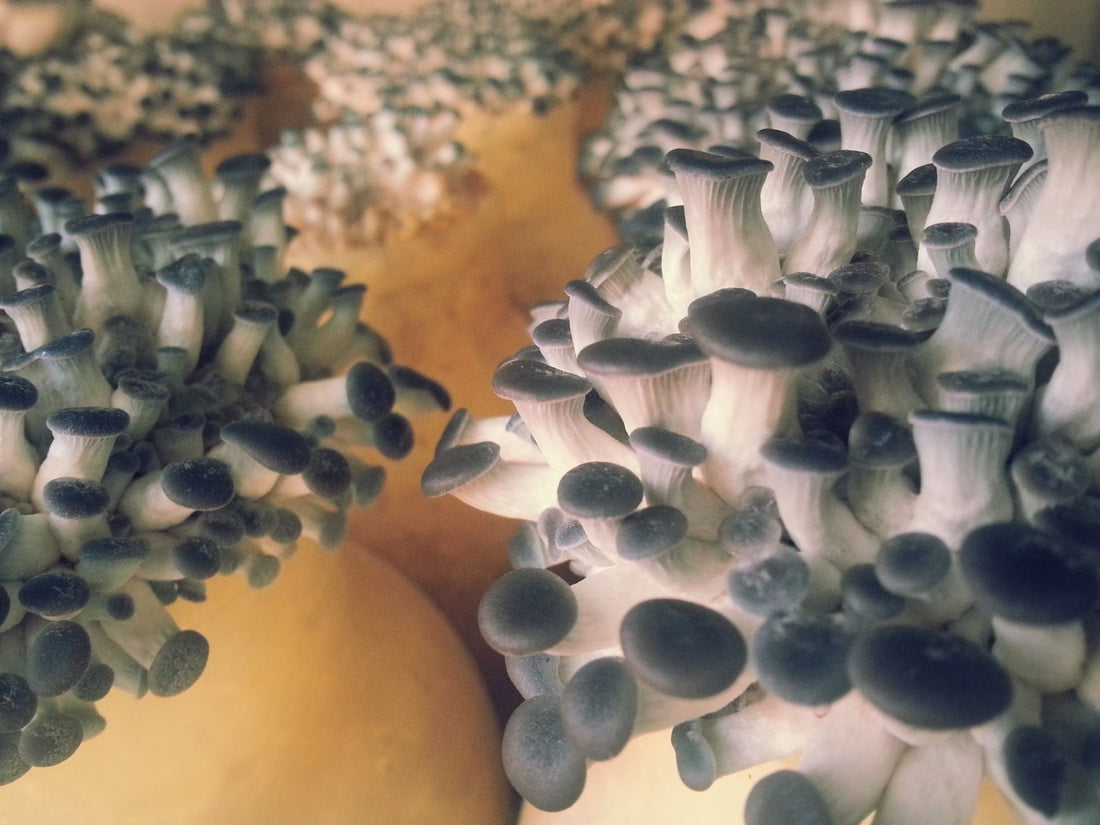Several days before Christmas Sarah and I found ourselves in Fresno California. We visited the local farmers market and were delighted to find Sun Smiling Valley Farm (SSVF) vending mushrooms, even more delightening was the fact that they would happily give us a tour of the farm. The facility was a building divided into 10 different growing rooms looking very similar to large walk in fridges. They also had open rooms for packaging and preparing mushrooms for market, cleaning bottles, and preparing the substrate. SSVF utilizes a technique and technology developed in Japan. Most of their operation utilized machines imported from Japan to mechanize everything. Sawdust was brought indoors and supplemented with a small amount of wheat germ. A machine packed the substrate into plastic bottles and placed lids with filters on top. The bottles were loaded onto trays and packed into the autoclave. The autoclave ran for 8 hours, sterilizing the bottles and medium. The bottles were then unloaded on the otherside of the autoclave and allowed to cool overnight in a room with UV lights and a HEPA filter.
The bottles would then be loaded onto the machine shown on the right. An already infected bottle would be placed on top and uninoculated ones on the round disk at the bottom. Bottles would be spun around underneath the infected one, have the top lifted off, and a TBSP of spawn dropped into the bottle, with the lid closing right after. An ingenious machine taking the risk of contamination by people during transfers out. Also removes the need for large clean rooms and flowhoods usually needed to do transfers at the commercial level. Once inoculated bottles were left on the shelf to colonize for several weeks. After full colonization occurred the tops of the bottles were removed and the bottle was flipped upside down. This was a very nifty trick which minimizes contamination by particles simply settling onto the top of the mycelium. The humidity was raised to 90 or 95% and the temperature was slightly dropped. After 4 or 5 days once pinning was initiated the bottles were flipped back over. Maintaining the humidity at 85 to 90% and temperature around 55 degrees the bottles developed fruit bodies simultaneously.
Below a crop of Pleurotus eryngii or King Oyster fruiting. To the right pinning is initiated and bottles are ready to turn rightside up.
Seeing the simplicity of this operation was very inspiring although I did leave with some unanswered questions like what they use for spawn and their techiques for cleaning rooms and machines. They also had mislabeled one of their products as Shimeji (Hypsizgus tessulatus) when in actuality the mushrooms were small blue oysters (Pleurotus ostreatus).






